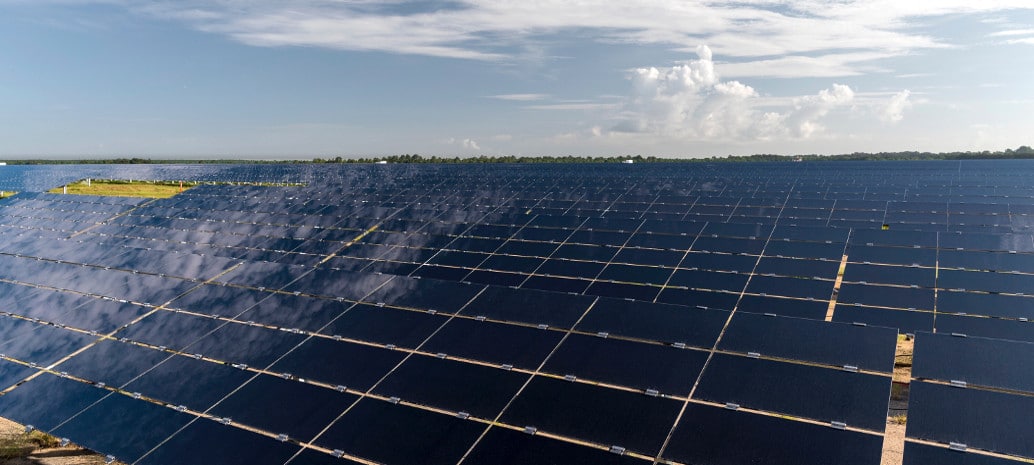The U.S. military has long been ahead of much of the nation, and particularly the federal government, in terms of attitudes towards climate and energy. Various sub-agencies within the U.S. Department of Defense have been issuing reports on the potential impacts of climate change every year since 2007, and in 2009 the department set a mandate requiring that 25% of total energy come from renewable energy sources – a more aggressive target than any U.S. state at the time.
As part of this 25% goal, the military seeks to install 3 GW of solar PV by 2025, and this week took another step toward that goal with the completion of 120 MW-AC of solar plants on three Navy and Air Force bases in Northwestern Florida. This includes a 50 MW-AC solar plant at Naval Air Station Pensacola, a 40 MW project at Naval Air Station Whiting, and a 30 MW array at Eglin Air Force base.
“Each installation and mission throughout the Southeast is unique and it is imperative for us [the Navy] to have the energy security and resilience needed to support the greater Navy mission,” stated Naval Air Station Pensacola Commanding Officer Captain Christopher Martin.
The projects were developed by Coronal Energy, Panasonic’s solar project development division, and Swinerton was hired to provide engineering, procurement and construction services. At least one of the projects, the 50 MW at Naval Air Station Pensacola, feature First Solar’s thin-film modules, and the entire portfolio incorporates SunLink’s GeoPro fixed-tilt mounting solution.
Utility Gulf Power, a subsidiary of Southern Company, will buy the electricity generated by these projects, which are part of a boom of large-scale solar in Florida. In June Blattner and Black and Veatch began construction on a portfolio of eight utility-scale solar projects for utility Florida Power and Light which total 596 MW.
Despite being the 3rd-largest U.S. state by population and boasting ample sunshine, Florida has only the 15th-largest cumulative solar capacity to date. However changes in taxation policies for distributed solar and a renewed interest by utilities in low-cost utility-scale solar bode well for the state’s future, and by 2016 the state had already risen to the 9th-largest solar market among U.S. states.
This content is protected by copyright and may not be reused. If you want to cooperate with us and would like to reuse some of our content, please contact: editors@pv-magazine.com.









By submitting this form you agree to pv magazine using your data for the purposes of publishing your comment.
Your personal data will only be disclosed or otherwise transmitted to third parties for the purposes of spam filtering or if this is necessary for technical maintenance of the website. Any other transfer to third parties will not take place unless this is justified on the basis of applicable data protection regulations or if pv magazine is legally obliged to do so.
You may revoke this consent at any time with effect for the future, in which case your personal data will be deleted immediately. Otherwise, your data will be deleted if pv magazine has processed your request or the purpose of data storage is fulfilled.
Further information on data privacy can be found in our Data Protection Policy.